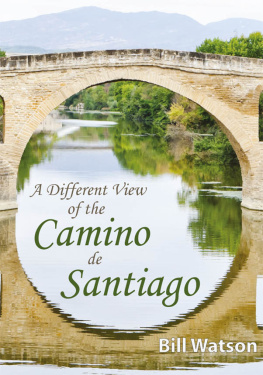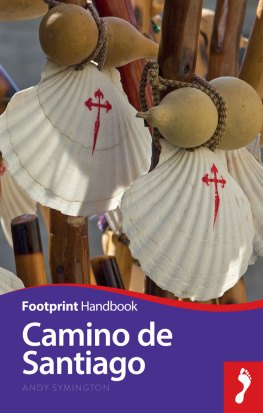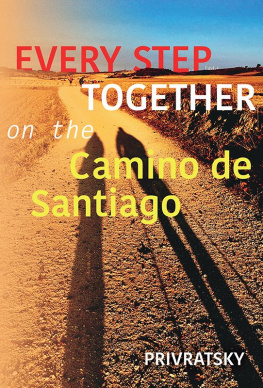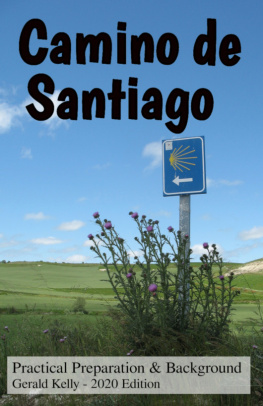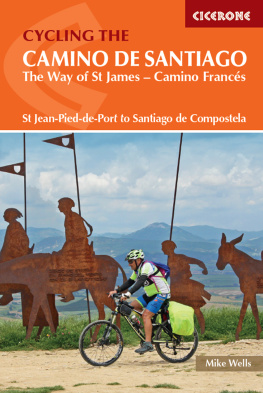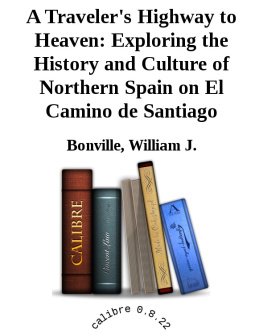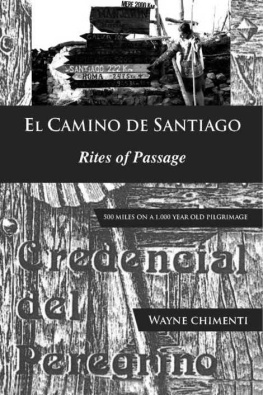Other Books By The Same Author
Mechanical Services for Buildings
T D Eastop & W E Watson
Longman Scientific & Technical 1992
Thermal Design of Shell & Tube Heat Exchangers
Bill Watson
Shell & Tube Consultancy & Publications Ltd (satcap)
Printed by PrintOnDemand-Worldwide.com 2009
Contact, Review and Comment
The author has a website; satcap.co.uk which was set up for his previous book last year. New pages will be added to allow readers to contact me, review and comment on this new book on the Camino.
>
Acknowledgements
Text
I would like to thank Alan Watson, Kim and David Lloyd, Mac Wright, Roger Briggs, Ian Spittle and the mate he involved. They all read my first draft pointing out errors, inconsistencies and making suggestions as to how it could be improved. They were all very pleased that at last I had written something non-technical that anyone could read.
Lastly I would like to thank my wife Kath who is a veritable walking dictionary and custodian of the English language. Unlike myself who would like to see it reformed, starting with the confusing and archaic spelling.
Photographs
I never had a camera with me on my Camino all the photographs are therefore cheats. After I had finished my first draft I decided that some illustrations would help to brighten up the book.
The pictures of the badger, donkey and the two of me were taken by Mac Wright. The picture of the dog was taken by my son Che. Unfortunately Sunny is nothing like the magnificent dogs I witnessed working during my walk.
Crosby library in Liverpool provided the picture of the old family pub which was taken before 1900.
All the other pictures were selected by me and taken from the web site shutterstock.com by my publishers.
Maps
The general map of northern Spain and adjoining countries gives an overview of the geographical location relative to places the reader should be familiar with. It also shows some of the alternative routes to walk to Santiago. This map is reproduced courtesy of Santiago-compostela.net
Their web site is dedicated to the Camino. The walk I followed is divided into 32 sections and there are beautiful photographs of scenes and places of interest along each section. Unfortunately I never found this site until everything else was in place typical of me. For anyone preparing to walk the Camino it is a 'must see' and if they are fortunate enough to have the latest gadget which does everything except pour a pint of beer they will be able to view where they might be staying before they get there!
The more detailed map shows the route I tried to follow and is taken from the back of my 'peregrino (pilgrim) passport'. It shows the main towns and cities along the Camino. The numbers without brackets along the line of the path represent the distances between each town in kilometres and those in brackets the total distance to Santiago, (by the shortest routes.) For readers from the US, Myanmar or Liberia whose countries have still not adopted the international SI system of units a rough conversion factor is 1 kilometre = 5/8 mile. This makes the path I followed about 800 kilometres or 500 miles. (I feel very strongly about the system of units now accepted by most of the world. The politicians in my own country never understood that continental Europe was giving up their own outdated Metric system when we changed from our imperial system. To this day they continue to spread the lie that the UK 'went metric'. The consequences of this and the enormous cost to us all are explained in detail in my last book.)
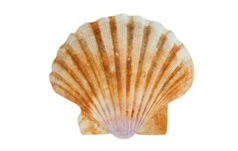 | The Camino |  |
A common criticism of my first draft of this book is that it did not provide an early explanation of what Camino was about in general and the significance of the scallop shell in particular. The reason for this is that I had very little idea myself when I started out and I just wrote the first draft from the diary I kept and my vivid memories of events during the walk. To make the book more readable I will try and rectify this now.
The word Compostela has an astronomical meaning field of stars. The word Camino simply translates as path or way. To Christians in general and Catholics in particular this may be expanded to 'The way of St. James'. This is because the modern day Camino ends in Santiago de Compostela which now has an impressive cathedral. Catholics believe that the remains of the apostle Saint James are buried there after being transported from Jerusalem by his disciples after his death.
The starting point for the Camino was traditionally an individual's home and I met some people who did that. However there are now pilgrims from all over the globe and although people have found many novel ways of crossing the Atlantic walking is not one of them.
The "Credencial del Peregrino" I bought at Saint-Jean-Pied-de-Port can be translated as a pilgrim's passport and resembles a normal passport in many ways. It not only gives access to the refuges but is stamped and dated at each one. It therefore provides a record of the walk. At the final office in Santiago it is scrutinised before a certificate can be awarded to show that the Camino has been completed. One of the illustrations towards the end of this book is a section of my 'passport'.
After I finished the first draft I had a weeks break in Sharm El Sheikh to get some first hand reactions to the political turmoil in that country after president Mubarak resigned. It also gave me the chance to dive on some of the sites I had first dived over thirty years before when Naama Bay was just a small village and the only way to reach it was on a bus from Cairo across the Sinai desert. I could write another book on the changes that have taken place since then but one thing that has not changed is the interesting company in the evenings in bars frequented by divers. I was in the Camel bar one night when I mentioned the Camino to a young man from Northern Ireland. He told me about some redevelopment work that had just taken place in his home town. The work involved exhuming some graves in the grounds of an old monastery. They found three monks buried together, each with a scallop shell across their chests. He promised to e mail me the full details but of course he never did and he was not sure if the graves were 700 or 800 years old. Anyway it provided me with a first hand account of the significance of the Camino to Christians a long way from Spain a long time ago.
The route the Camino follows predates the Christian era. It was a trade route used by the Romans. It was also used by pagan pilgrims although very little is documented about those times.
Before I started on my Camino I already knew quite a lot about scallops/pectens. They can be found in many European waters and they taste delicious. I still have the shell of one of the largest I ever found during a diving trip to Scapa Flow in the Orkneys.
The picture of the top shell also had a special meaning for me as the logo for the Shell oil company. To most people it is just a sign above their petrol stations. To me it also means a plethora of specifications which needed to be read before designing any equipment for one of their petrochemical plants. It has an interesting history as a logo. The Shell Transport and Trading Company's first logo was the more humble shell of a mussel. It was changed to the scallop shell in 1904. Was this just for the improved visual impact or had one of their top brass just returned from walking the Camino?

